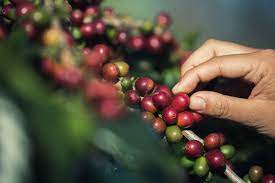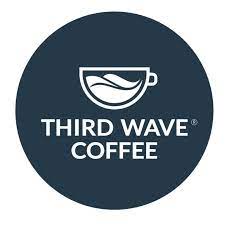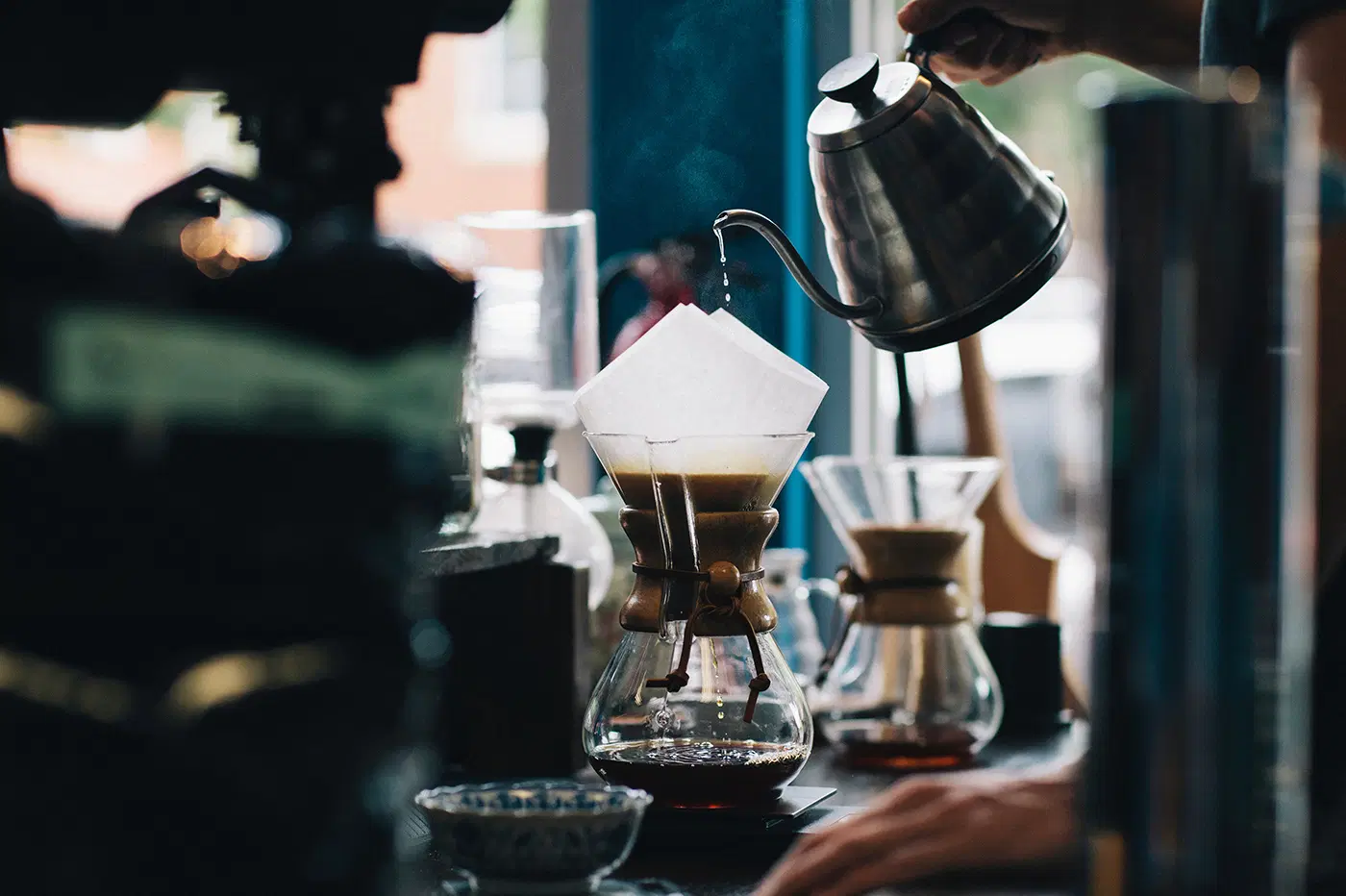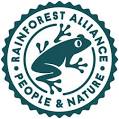The other day I visited my local coffee shop. The lady in front of me seemed perplexed by the phrase "single origin coffee," which describes some coffee beans on the menu.
While the barista patiently explained it to her, I couldn't help but smile. I knew she was about to embark on the fascinating world of single-origin coffee, just as I had not long ago.
Back then, I, too, was confused about how beans originate. I actually didn't care much at first. After all, I usually found myself in line at Starbucks with antsy people in front and back of me.

So I didn't waste my time mulling over the nuances of specialty coffee beans.
Like most, I just knew I wanted some coffee; everyone wanted some coffee. Right now!
It wasn't until I visited a coffee trading company that the associates took the time to explain the complexities of the products they wished to sell. After that, I grew a fascination with bean quality and coffee origin.
Did You Know? Coffee trading companies have a wider selection of coffees to try. Consider visiting a coffee trader over big-name coffee shops. You'll find the staff more knowledgeable and more passionate by comparison.
Part of the sales strategy at a coffee trader is to demonstrate the same coffee presented in various ways.
They made single-origin light roast Yirgacheffe coffee available on the day I went. I realized that brewing this coffee from a pour-over, a french press, and an espresso machine provides distinct flavors.

This notion got me thinking about how and why I could perceive these qualities from single-origin beans over blends, which sparked this post.
This article will cover the basics of single-origin coffee beans, the third-wave movement, why it matters, and my recommendations for cold brewing with them versus blends. Read on to learn more.
What are Single-Origin Coffees?
Single-origin is a simple phrase with layers of meaning, much like the coffee beans it characterizes.
In a nutshell (cherry hull), it describes where the coffee bean variety grows. However, it encompasses so much more than that.
Your single-origin coffee beans could come from the same country or region, a single farm, estate, or producer.
It could even come from a small subsection of a farm or a micro lot. Let's dissect those next.

Single Region or Same Country
When your single-origin coffee comes from a single country or region, this means exactly what it sounds like; the coffee may come from Costa Rica or Peru, for example.
However, we can hardly rely on such broad terminology to describe an origin; it is simply too general to have any real meaning.
After all, in countries such as Brazil, there are so many different climates affecting the coffee and flavor, making a somewhat meaningless Brazilian single-origin coffee.
What would make more sense is to niche down to Brazil's regions where a single microclimate better describes the bean.
Single Farm or Cooperative
Much more common are single origins from a single farm or cooperative of farms in different locations. The weather is usually a far more predictable factor. A farmer's traditions for growing and harvesting are also traditionally reliable and consistent.

Sometimes a farm is not large enough to supply enough coffee beans to meet market demands. Several farms, usually within the same local area, will enter into a cooperative when this situation occurs.
They agree to produce a specific kind of coffee under particular conditions, send it to market consistently, and bring the profits back home to share.
Whether the coffee comes from a single farm or a cooperative, single-origin coffee of this type is a unique product of its harvest time and place.
Single Micro Lot
The most exclusive, arguably the best single-origin coffee, and therefore the most expensive coffee, comes from a particular plot of land within a specific farm. Such a geographically limited growing zone means the supply for this kind of single-origin specialty coffee is minimal.
However, while it is exclusive, it is also a snapshot of a particular point in time for the farm. As a result, there is a slight variation in weather (which can still happen with a farm if it is large enough), producing the purest coffee.
Additionally, when all coffee beans are grown in such a small area, it allows you as the consumer to actively participate in regulating a farm's working conditions. This awareness means that fair trade and sustainability are factors you can invest in, something that the coffee industry has historically lacked.
The Third Wave Coffee Movement
The three waves of feminist activism likely inspire the concept of "third-wave" coffee.
This movement involves consumers and manufacturers who consider coffee an artisanal food product, similar to wine.
These enthusiasts appreciate their experience more when knowing details about their coffee's origin.

They seek to highlight what makes their favorite coffee beans different and prioritize taste, quality and equitable relationships with farmers and farmworkers over commodities pricing. This attention leads us to the significance of single origins of this movement.
Coffee Blends, Single-Origin Coffees: Why Does it Matter?
So what does all this mean? Why does knowing where your coffee comes from matter? Well, if you want a quick, reliable blend, the same thing every time, it probably doesn't.
In that case, single-origin coffee isn't for you. On the other hand, if you're like me and enjoy learning more about your coffee, not just its various flavors, but where it comes from, how it's grown, and how the environment shapes the coffee you enjoy, then there is nothing better than single-origin coffees.

Reliability
If there is one thing I know about coffee drinkers, it is that they demand high-quality coffee that tastes reliably, how they expect it to taste.
Note: Single-origin coffee is not always reliable when it comes to flavor.
While farmworkers utilize the same trees and farming methods for each harvest, the climate and environmental changes affect the outcome.
Suppose the variety's flavor reliability is most important to you. In that case, I recommend you to order a coffee blend, or better yet, your favorite house blends from independent coffee shops.
Coffee roasters create blends to meet the demands of high-volume distributors. So you see, I am not suggesting that single-origin coffee is of inferior quality, just that it is less reliable than a blend coffee because many variables can affect the quality of a single origin.
Suppose you want reliability in the sourcing location over the intricacies of flavor instead. In that case, a single origin is the best choice. Then, when buying a single-origin coffee, you can rest assured that all your beans come from the same location.
This reliability quotient bleeds into a natural curiosity and can open many doors for exploration. For example, just as how a specific year of whiskey can have completely different notes than another year, we can similarly compare single-origin coffee beans to previous harvests.
Sustainability
Regarding coffee sustainability, we need to consider the following three P's: People, Planet, and Profit.
People
Many of the best growing locations for coffee are in poverty-stricken third-world countries. Such countries lack the infrastructure to meet the demands of the more wealthy first-world country buyers and, as such, exploit their workers to make up for this gap.
Child labor is one example of the severe issues many coffee farms exploit. Children, after all, don't know any better and are far easier to control. They provide another income (albeit a significantly smaller one than for an adult) to their struggling families.
Through organizations like the Rainforest Alliance, activism has improved conditions as farmers and farmworkers fight for a fair living wage and disallow child labor.

By buying single-origin coffees, we can investigate where these beans grew and the processing methods used in their manufacturing.
With our dollars, we can influence more equitable outcomes for coffee workers; we can, in a sense, lift the curtain, exposing coffee workers' conditions.
In so doing, we support companies that genuinely dedicate resources to enriching their employees' lives. Yet, at the same time, we deny payment to organizations that exploit their workers.
Planet
Climate change and deforestation are just two significant environmental factors that we need to be aware of as coffee connoisseurs.
In addition, coffee farms require large plots of land. To preserve a balanced ecosystem and environmentally sustainable farming methods, we need to pay attention to where we source our coffee beans and what farming methods those growers utilize.
For this reason, we can take advantage of knowing these specific details about single-origin beans. We can ensure we only support those farms that practice sustainable farming methods, like implementing a shade-grown philosophy.
Profit
Single-origin coffee is generally more expensive than blended coffee, but that price comes with some guarantees. There are several reasons why single-origin coffees cost more than blends.
- Less bulk costs more per lb to process and ship.
- Less automation means more workers to support.
- There are fewer cut corners in production.
- Workers are guaranteed equitable working conditions and pay.
- There is a market influence where demand outweighs supply.
Which is Best: Single-Origin vs. Blends?
Yes, all of them.
Unfortunately, I can't be more specific because what is best to use for you depends on a few factors.
For example, the way coffee roasters prepare the final product could shift the tides on a particular single origin, making it the best tasting I've ever had, or have it fall into the pits of "I wish I never bought that."
As there are pitfalls, there are as many "right" answers.
So instead, I'll ask a couple of questions:
- Do you prefer to have the same tasting coffee every time you make a cup?
- Do you gravitate toward flavors with notes of chocolate, nuts, or caramel, or does a variety of floral, fruity, and sweet flavors appeal to you more?
- How important is the price?
- Do you care whether your beans are organic, fair-trade, or sustainably grown?
- Does knowing the exact region and culture a coffee comes from making your coffee-drinking experience more worthwhile?
There are significant benefits to choosing single-origin coffees, but for most people, sticking with a coffee blend is still the preferred option.
Blended coffee origins ensure you get consistent mixtures of flavors, like those filled with chocolatey notes, earthiness, deep nutty, and caramel undertones.
You can even add milk, knowing it will not pollute the taste too much.
A coffee blend is also cheaper than a bag of single-origin beans because blended coffee origins are primarily mass-produced.

Alternatively, single-origin coffee is best for you if you relish the thought that you are experiencing a specific region's culture with every sip.
While the flavor is not always consistent, single-origin coffee usually contains nuances you'd miss from a coffee blend.
To me, it's like tasting the remnants of a nearby fruit tree or other specific single flavors. In addition, the experience is brighter and, in my opinion, best enjoyed as a lighter roast.
As discussed above, single-origin coffee also enables your coffee knowledge about a specific farm's processes, should they interest you. Of course, its exclusivity and demand raise the price, but perhaps this knowledge is more important.
Cold Brew Single Origin Coffee Success Tips
So, maybe you're convinced that single-origin coffee is the way you want to go for your next quality cold brew coffee experience, right? And with all the benefits of cold brew coffee, I'm sure you'd like to try a cold brew single-origin experience.
So what aspects do you need to consider to enjoy the highest quality coffee regardless of the origin?
Grind your Own Coffee Beans
While buying pre-ground beans may be more convenient, that convenience comes at a cost in freshness. You can ensure you have the freshest flavor by grinding beans yourself.
And besides, you're already going for the best coffee possible, so why sacrifice good quality here?
Use a Coarse Grind
The finer the grind is, the longer the water takes to filter through. So by choosing a coarse grind, the flavor will be less harsh, and there is less chance that you'll end up with coffee sediment in your cold brew.
Use a Medium to Dark Roast for Immersion
Cold-brew already lowers the acidity and bitterness these darker roasts often have, so you don't have to fear any overpowering flavors.
Besides, darker roasts perform better when paired with the least expensive brewing method--immersion. Since roasting for longer times can mute the bean's acidity and brightness, you're usually better off choosing a darker roast over lighter roasts.
Set your coffee roasters to medium-dark for immersion.

Immersion isn't Always the Best Cold Brew Method for Single-Origin.
In other words, create your brew according to the bean's roast level. For example, use an immersion brewer if you plan to work with a medium to dark roast. On the other hand, suppose you prefer the citrusy notes like what I enjoy from a light roast Yirgacheffe. In that case, you're better off using a cool drip system instead.
Water Quality is Vital
Use filtered water wherever possible. Tap water has too many additives that can corrupt the coffee's flavor. Filtering your water first will ensure only the coffee extract's best, most authentic flavors. Avoid using water bottles.
Don't Waste Your Cold Brew
Have some extra cold brew? Then save some to make coffee ice cubes! This brilliant idea ensures that your perfectly brewed coffee is not diluted with water since ice cubes melt. Of course, you can always use some in various recipes, including ice cream, cakes, or cookies.
FINAL THOUGHTS
Personally, blended coffees in an immersion brewer will always be my go-to for a nice, robust cold brew.
Yet, there is beauty and meaning within a nice light roast and a cool drip tower when I choose to open that single-origin coffee bag. I enjoy extracting the particulars from single-origin beans to focus on the difference between this batch and the last.
What is your preference? Do you prefer single-origin specialty coffee from your favorite coffee shop? Or is the best coffee for you the cup that is in your hand, regardless of how it originates?
